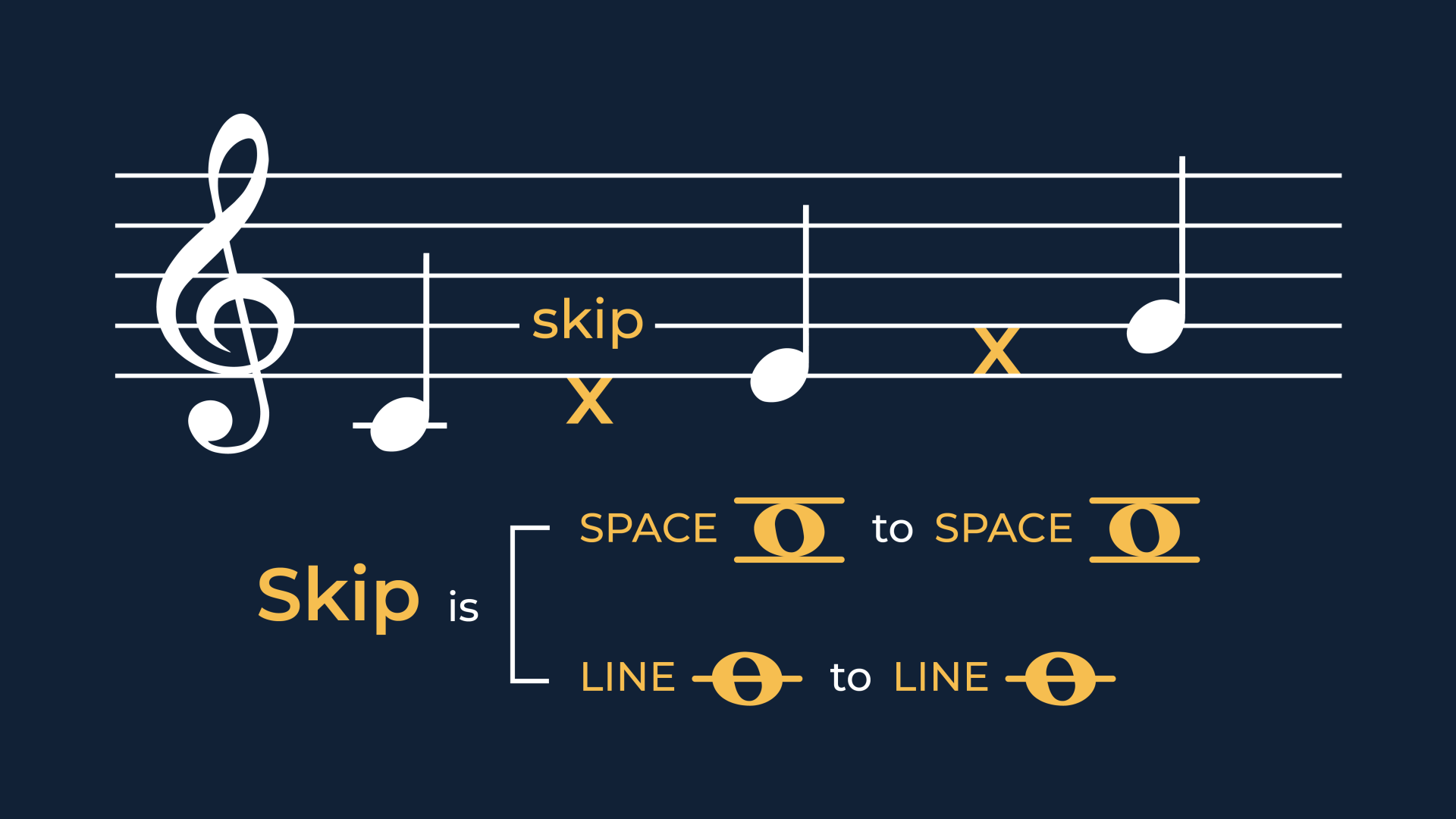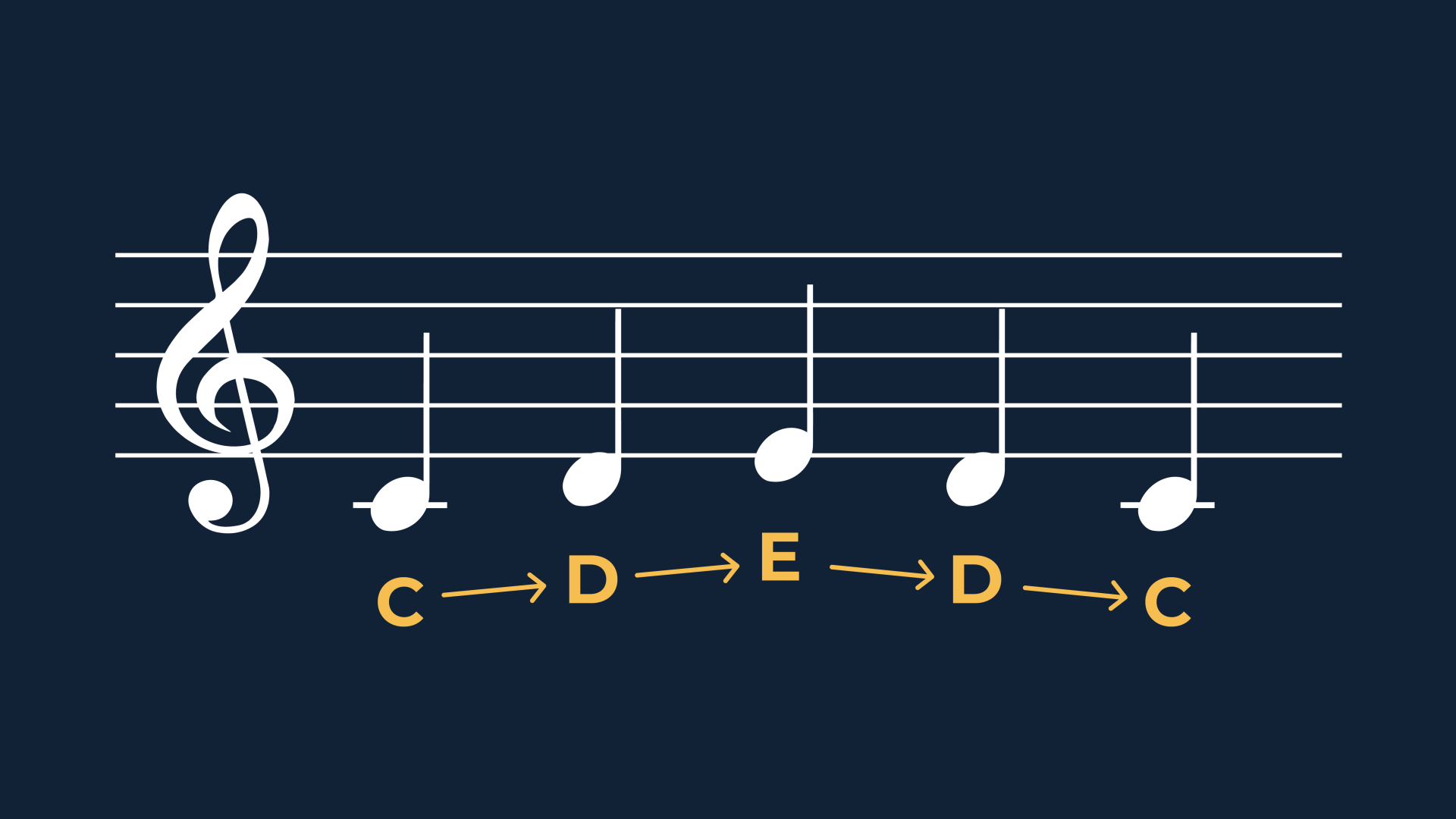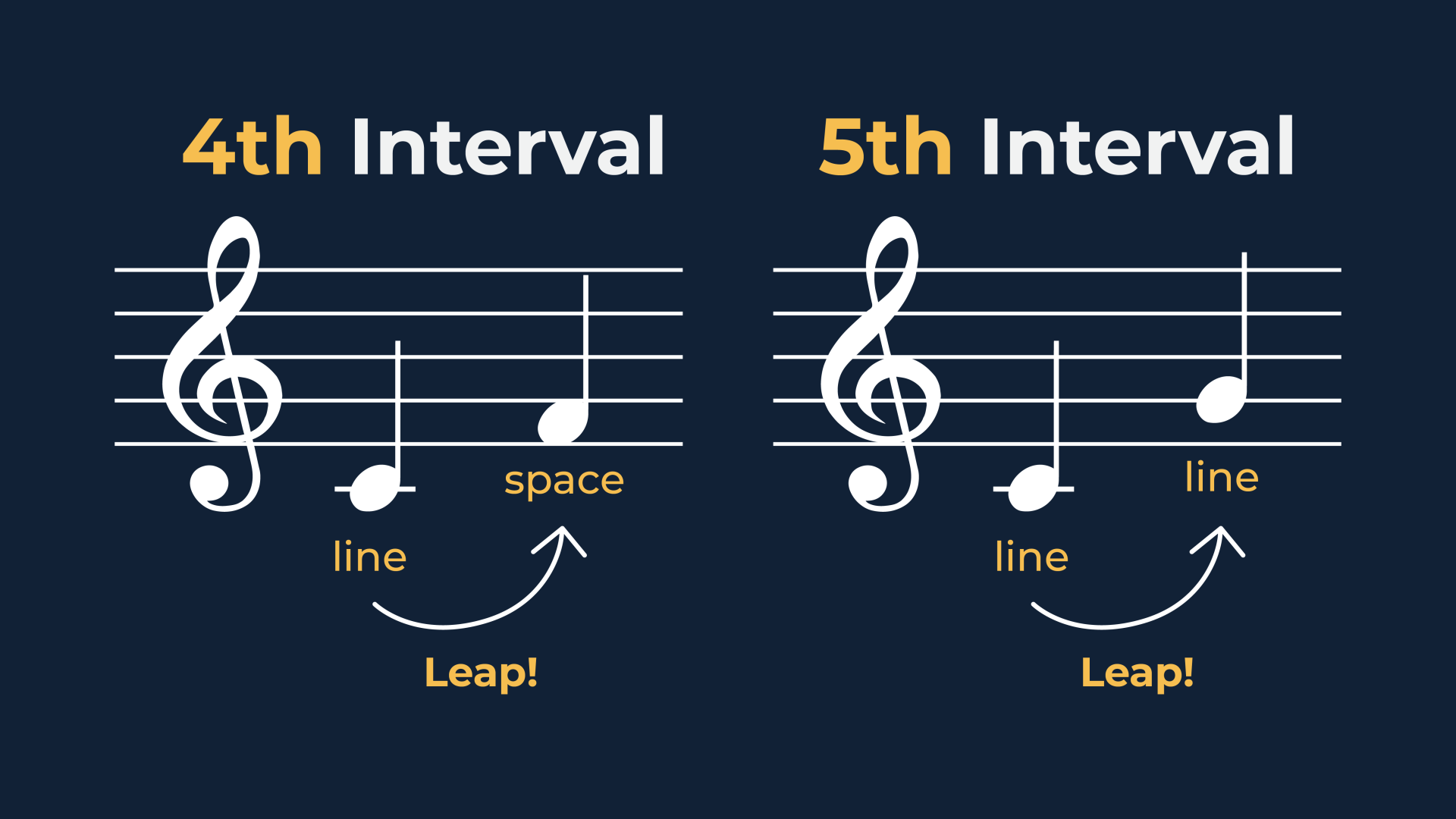The Easiest Way To Read Sheet Music For A Beginner Part. 2
In the last lesson, we talked about music intervals, clefs, and octaves on the piano. Today, we will go deeper and learn more about how to read a piece of music.
💡Reminder: Don’t be afraid to read the wrong notes. Even famous musicians sometimes make mistakes. Just keep practicing!
STEPS
Below, you’ll see a short line of music. Can you notice how the notes move in small, even ways? One note sits on a line, the next in a space, then again on a line, and so on. We call this kind of movement steps.

Steps happen when the notes move to the very next letter in the music alphabet. Let’s take a look at how this works:
That’s a step—a small move to the next musical letter. It feels like climbing stairs, one step at a time.

SKIPS
If steps are small moves, skips are jumps. In music, when we skip a letter, we also skip a space or line. For example:

From C (on a line) to E (also on a line), we skipped D (which is in a space).

Combining Steps & Skips
Now, let’s try to combine both. Imagine arrows:
But What If Music Doesn’t Follow This Pattern?
In real music, the space between notes isn’t always small like steps and skips. Sometimes, notes are far apart—and that brings us to a new concept: Intervals.
What Are Intervals?
An interval is the distance between two notes. Examples:

After you begin practicing, you'll start to recognize different and larger intervals more easily.
For example, the 4th interval (from C to F) is shown by a note on a line moving to a note in a space, with a wider distance. This is also known as a leap.
Similarly, the 5th interval represents an even bigger distance—either between two lines or two spaces.

LET’S PUT IT ALL TOGETHER!
We’ve gone through each music reading concept step by step—now it’s time to bring it all together into one musical staff and try reading it all!

As soon as you look at the music, you might recognize Middle C. Use this as your starting point.

TIPS TO READ NOTES FASTER
Flash Cards

Sight-Reading Book:
And don’t forget, you can also learn and practice along with teachers through the DMA Online Course, taught by experienced pianists and vocal coaches. This will boost your music skills faster and more effectively!

And just like that, you've learned the foundation of music reading. Remember:

Pages
-
Home
-
About Us
-
Course
-
Book & Products
-
Contact Us
-
Imprint

Pages
IMPRINT
Dechant Music Academy (DMA)
Head Office Hong Kong
3f Wing On Building, 232 Lockhart Road, Wan Chai
Registered Court: Inland Revenue Department Wan Chai, Hong Kong
VAT-ID: 55468457
Email: info@dechantmusicacademy.com
German Warehouse Address
Grosse Str. 42, 49424 Goldenstedt-Lutten
Registered Court: Finanzamt Neukoelln, Thiemannstr. 1 , 12059 Berlin, Germany
USt-Id-Nr: DE356323103
Phone: +49 (0) 162 977 1308
Email: info@dechantmusicacademy.com
Managing Director
Irina Dechant - CEO & Founder DMA
IMPRESSUM
Vorsitzenderin: Irina Dechant
Hauptsitz Hong Kong
3f Wing On Building, 232 Lockhart Road, Wan Chai
Registriert bei: Inland Revenue Department Wan Chai, Hong Kong
VAT-ID: 55468457
Email: info@dechantmusicacademy.com
Deutsche Warenhausadresse
Grosse Str. 42, 49424 Goldenstedt-Lutten
Registriert bei: Finanzamt Neukoelln, Thiemannstr. 1 , 12059 Berlin
USt-Id-Nr: DE356323103
Mobile: +49 (0) 162 977 130886
Email: info@dechantmusicacademy.com
